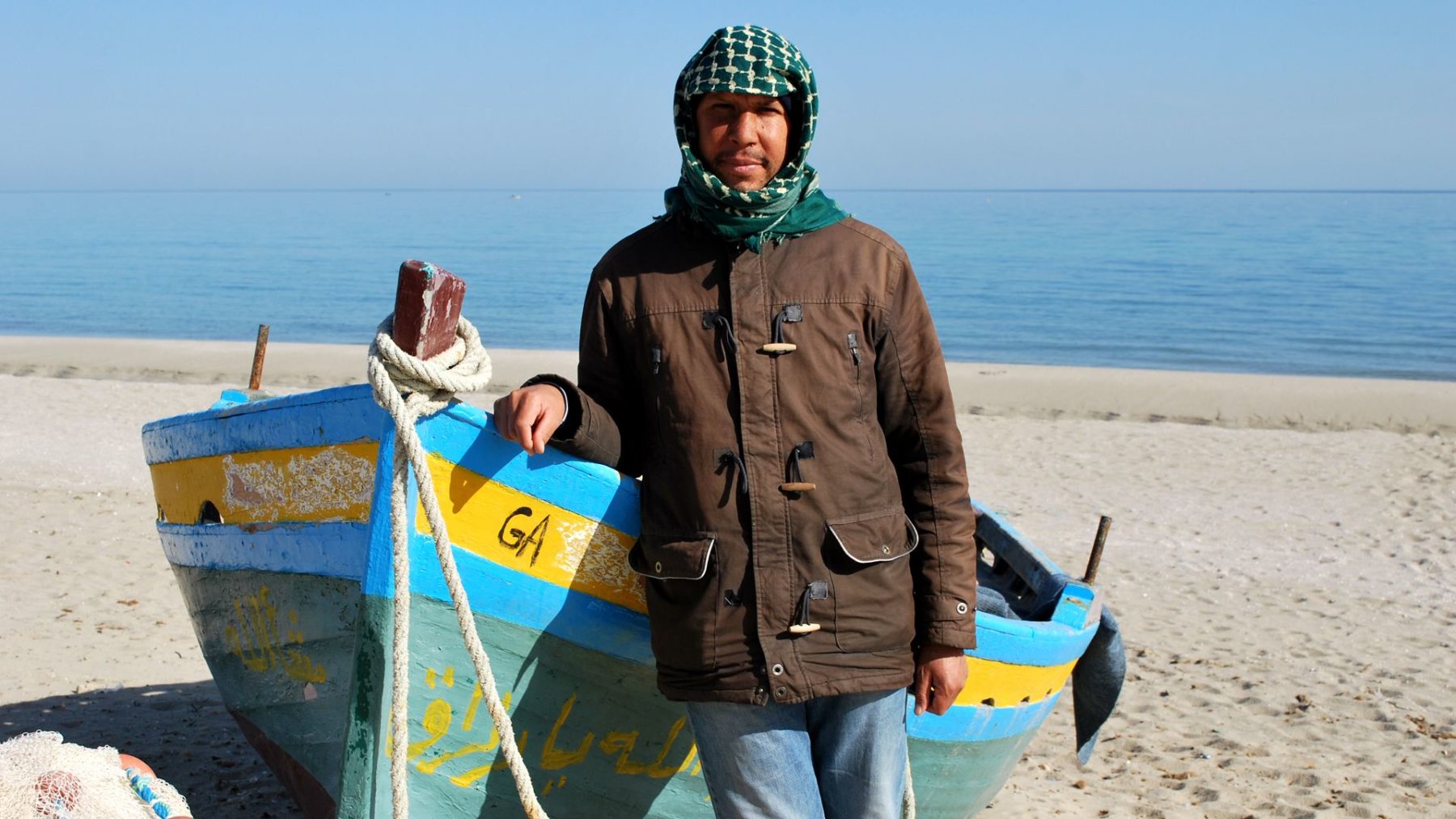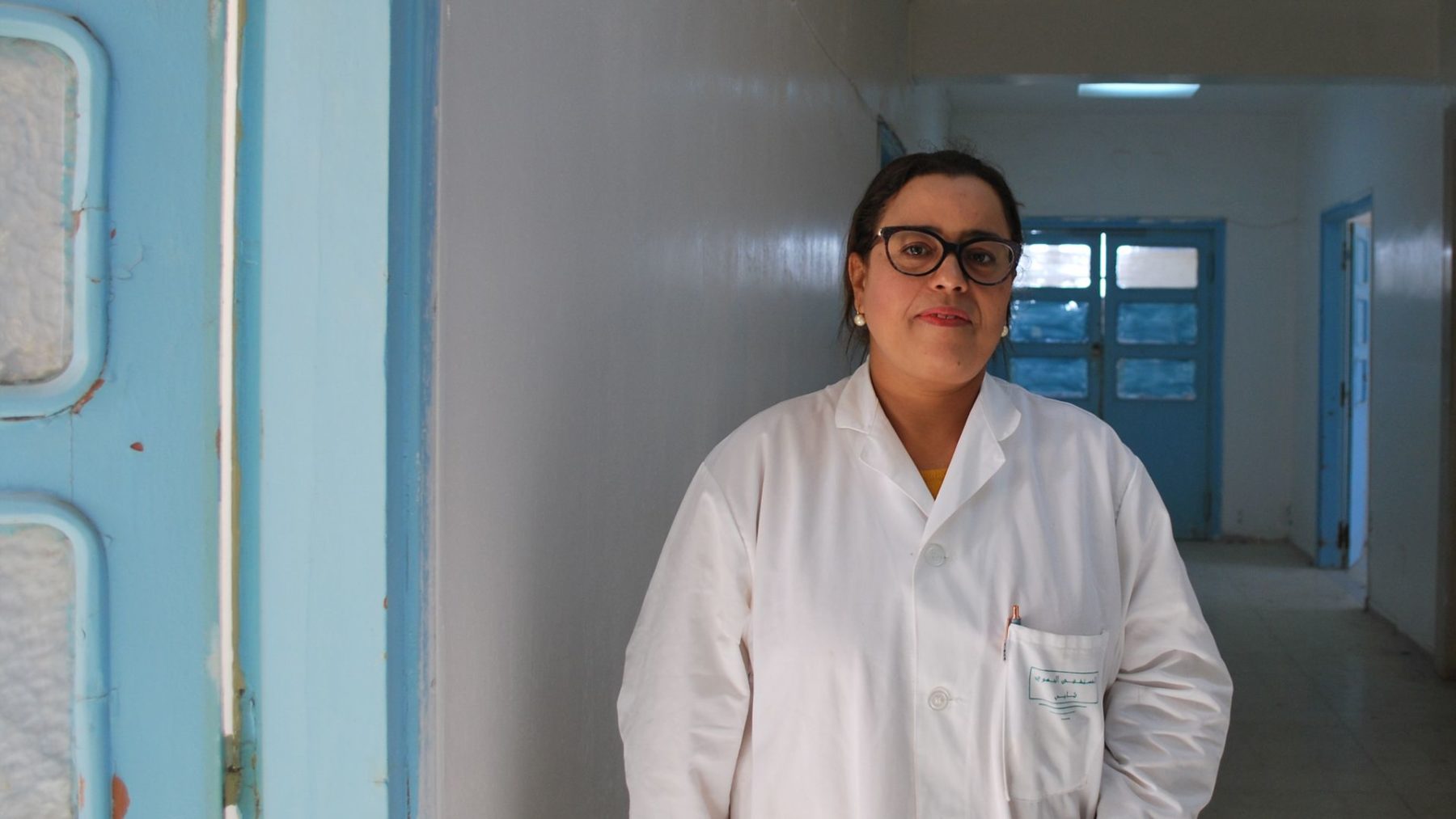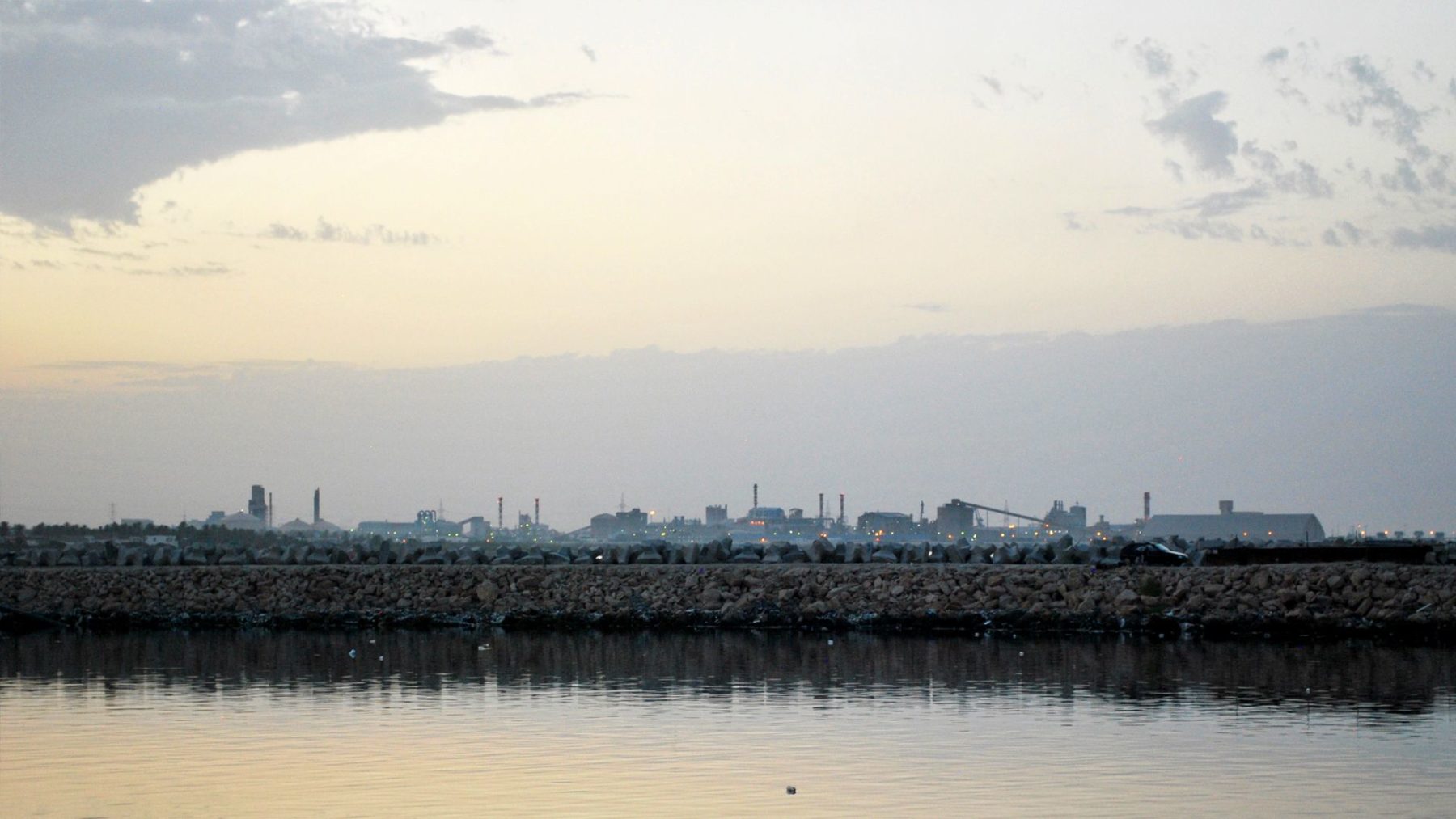Once a pristine Mediterranean oasis, the Gabès region has been devastated by local chemical factories and health problems are soaring
Abdellah Nouri has not been out to sea for two years. A fisherman from the Mediterranean town of Ghannouch in Tunisia’s coastal Gabès region, he was diagnosed with cancer in 2018. His condition and its treatment have left him housebound.
Nouri has worked the surrounding waters since he was 17. He believes that his health problems are caused by pollution from a nearby industrial port.
“The port has destroyed me, my health and my livelihood,” he said.
Sat on the floor in his living room, Nouri pointed in the direction of a large plant, operated by the state-run chemical company Groupe Chimique Tunisien (GCT). Dedicated to the processing of raw phosphate, its imposing chimneys belch fumes into the air and its drains discharge millions of tons of toxic black sludge into the sea every year.
Gabès Governorate covers 4,450 square miles and is home to almost 400,000 residents. It is also the only coastal oasis in the Mediterranean. Once a pristine agricultural and maritime community, the region was famed for its abundant marine life and verdant rows of pomegranate trees, henna plants and date palms.
Locals tell stories of visitors marveling at the land’s natural beauty, but any tourism potential was lost in the 1970s, when the government turned it into the main centre of Tunisia’s phosphate industry. Phosphate rock, mined 100 miles away, in the hills of the Gafsa region, are a vital component in the production of a variety of exportable goods, including fertilizers and food preservatives.

Photo by Layli Foroudi.
Industrial pollution is devastating coastal communities around the world, from France to India. In Morocco, another phosphate-rich North African nation, chemical plant workers have reported high rates of respiratory disease and cancer, according to the charity SwissAid, and local arable farmers have experienced depleted harvests.
A similar story is playing out in Tunisia, but the subject of pollution and its effects on the environment and public health has long been ignored in Gabès. Under the Tunisian dictator Zine el Abidine Ben Ali, people feared the consequences of talking about it and efforts to carry out studies were routinely thwarted by the state. After Ben Ali’s fall in the revolution of 2011, residents hoped for something better. However, while people are now free to protest, little attention is being paid to their concerns and even less action taken.
Ignoring the problem
In the city of Gabès, the governorate’s capital, an old electronic display board on the side of the road is supposed to show the levels of sulfur dioxide, nitrogen dioxide and ammonia in the air. According to passersby, it has been broken for years.
The sign was installed by GCT, the largest manufacturer operating in the port. In addition to three GCT factories, the area contains some 20 plants operated by private companies, including two other highly polluting facilities that produce aluminum fluoride for use in metal foundries, and phosphate salt, which is used in the making of detergents and ceramics.
Trains deliver up to 3.5 million tons of raw phosphate to the GCT factories each year. It is processed and exported by container ships to dozens of countries abroad. Nearly 5,000 people work in the region’s chemical industry, more than 2,800 for GCT.
While the company brings much-needed jobs to the area, the effects of pollution are clear to see. The stretch of beach between the town of Chott Salem and the industrial zone, less than a mile away, is composed of a thick black layer of phosphogypsum — a waste product created during the production of phosphoric acid. A 2018 European Union report found that GCT dumps around five million tons of it into the Mediterranean each year.
Phosphogypsum is mildly radioactive and contains both uranium and radium. According to a 2012 government study, fish catches near the coast contracted by more than 30% between 1997 and 2006, owing to the effects of chemical waste. The document noted that the marine ecosystem has been “severely damaged and that the situation is now totally irreversible.”
Nouri says local fishermen have suffered a dramatic decline in income. “Since the 1990s there has been nothing here. You used to be able to bring home 150 pounds of squid in one day,” he said, adding that now, a typical haul has fallen to seven pounds. Now, he rents his small boat to a fisherman in another town and pays for his cancer treatment with donations from his neighbors. He misses his old life desperately. “My heart is the sea. I’m heartbroken,” he added.
According to the conservation group BirdLife TunisiaAir, air pollution has contributed to a fall in bird populations. Rumors persist among locals of falling fertility rates and frequent miscarriages.
In 2017, the Tunisian government pledged to dismantle the existing GCT factories and move them to a new location, far away from residential areas. It also promised to stop dumping phosphogypsum into the sea. No further plans have been announced.
This week, there were renewed calls from local environmentalists for increased regulation and the removal of the factories, after the death of five workers in an accidental fire at an asphalt factory in the industrial zone.
“We fear that one day Gabès will be nothing but ashes,” said Haifa Bedoui, an activist with the local campaign group Stop Pollution, to hundreds of people gathered in front of governor of Gabès Mongi Thameur’s office on Wednesday. On a visit following the fire, President Kais Saied, acknowledged the environmental crisis in the region and promised a cancer treatment centre for residents. The Tunisian government has launched an inquiry to determine the cause of the blaze.
Speaking by telephone, Moez Haddad, GCT’s secretary-general, insisted that there are no proven detrimental consequences of the marine disposal of phosphogypsum. “A few studies show there are small problems — not a big problem,” he said. He did, however, concede that GCT plans to fall in line with international norms and end the practice “as a precaution.”
When questioned further about high rates of cancer and respiratory problems reported by residents in the Gabès region, he added that “there are no official studies that show a causal link between health problems and the effects of Groupe Chimique Tunisien on the environment.”
“Flagrant lack of information”
The residents of Chott Salem and Ghannouch can see and smell the pollution from the chemical factories in their homes. Traditional houses in the region are built around an open courtyard. This communal space is meant for people to congregate and children to play in. Now, parents tell their sons and daughters to stay in their bedrooms.
In 2017, nine students from a primary school in Bouchema, a town just over a mile away from the plants, were taken to the hospital with symptoms of asphyxiation after gases produced during the processing of sulphuric acid and ammonium nitrate were released into the air. The local governor brushed off residents’ concerns as mere “panic.”
Local healthcare workers regularly treat patients who appear to be suffering from long-term health issues caused by pollution. Dr. Hamida Kwass, who works on the respiratory ward at Mohammed Ben Sassi regional hospital in Gabès, says that asthma is particularly common among children in the town of Ghannouch.
“The factory is almost in their houses,” she said.
Kwass plans to carry out a study on air pollution and its effects on inhabitants. “There are polluting particles from the chemical industry that are known to be associated with an increase in respiratory diseases, whether they cause a disease or are an exacerbating factor,” she added.
Awatef Mansour, 30, lives in Ghannouch and makes around six trips to the regional hospital each month. Her three children, aged three, six and seven all suffer from asthma.
“When the wind changes direction to come from the port, my children find it hard to breathe,” she said.
She noted that her children’s health problems cleared up last year, when her family briefly lived in the town of Zarzis, 80 miles down the coast from the factories. “The doctor says it is allergies from the port,” she added.

Photo by Layli Foroudi.
Samir Aloulou, head of Mohamed Ben Sassi hospital’s cancer ward, says that the incidence of nasopharyngeal cancer is alarmingly high in Chott Salem and Ghannouch. This particular form of the disease, which Nouri is fighting, affects the part of the throat connecting the back of the nose to the mouth.
Aloulou believes that it is difficult to establish a “100% true link” between its prevalence and the chemical factories. “There is certainly a link between pollution and cancer, but cancer is a multifactorial disease — there is pollution, tobacco, food, obesity,” he said.
“There is a flagrant lack of information and credible data available from the Tunisian authorities,” said Mounir Majdoub, an economist who worked on a report, published by the EU in 2018, on air quality in the Gabès region. It found that elevated levels of particles that can easily pass into the lungs and have been linked to cancer and heart and respiratory infections. “The conclusions are not revealing of the real health situation due to pollution, they reveal the need for a study,” he added.
However, other illnesses appear far easier to connect to the chemical industry. Rachid Ben Othman used to work as a mechanic for Flourine Chemical Industries (ICF), a private company in the industrial zone that produces aluminum fluoride. When we met, he held out his right arm in front of him, his elbow crooked at somewhere around 140 degrees. It wouldn’t move further. He suffers from fluorosis, caused by overexposure to fluorine.
“It started in the wrists, and then the elbows. It is the calcification of the ligaments. Sometimes my knee just stops. It is like a car with no petrol,” he said.
Othman first began to notice a problem in 2000. His joints were stiff to the point that he could neither fully stretch nor bend them. It became harder to work and, eventually, too difficult to put on gloves. But he was not successfully diagnosed until 2011.
He says that he is one of the few ICF workers to have successfully claimed compensation for his disability — a payment of $135 per month and 40% of his medical bills. Othman suspects some of his colleagues have fluorosis too. “They talk to me about aches in their shoulders, aches here and here, the calcification. I know the symptoms,” he said.
A taboo subject
In addition to state inaction, organizations that should be standing up for the safety and wellbeing of workers are refusing to do anything. Executives at the local branch of the Tunisian General Labour Union (UGTT), do not consider it their role to speak out on matters of public health and pollution.
When I brought up the subject to two members of the regional union’s executive committee in Gabès and a manager from one of the GCT factories, the latter laughed quietly and said, “That’s a taboo subject.”
One of the union executives said that he didn’t want to talk about pollution because the factories have led to development in the region and provide employment for thousands of people.
While Tunisia has long been one of the world’s biggest phosphate exporters, the industry has contracted in recent years, owing to political instability and frequent protests by unemployed young people demanding jobs in the phosphate mines.

In the years since the revolution, Groupe Chimique Tunisien’s annual production has averaged less than a third of what it was in 2010, according to Habib Wahachi, deputy secretary general of the Gabès bureau of the UGTT. Tunisia was forced to import phosphates from neighboring Algeria for the first time last October.
GCT has not made any new hires in the region since 2017. National unemployment is currently at 17.4%. In Gabès, it stands at 24% overall and more than 50% among young people.
Hundreds of Gabèsian youth blocked the industrial zone in Ghannouch and the GCT administration building in Gabès town center from late November into December last year. Many denounced the pollution yet demanded jobs in the factories.
“Give me a job so I can survive — we are the ones directly affected by this pollution,” said Youssef Hajej, an unemployed university graduate, from Ghannouch.
He insisted that the GCT owes local people work as compensation for the destruction the company has wrought on the area and its traditional industries. “They are destroying everything, it is normal that people here are asking to profit at least a little bit from that.”
The story you just read is a small piece of a complex and an ever-changing storyline we are following as part of our coverage. Now we want to hear from you, our readers. Please take a moment to fill out this survey and tell us what matters most to you. We are about to launch a new membership program at Coda Story, and getting to know your news needs will help us make it better!
*Original article online at https://www.codastory.com/waronscience/pollution-in-tunisia/
